Frosted Chanterelle
A larger, paler and less often recorded relative of Chanterelle. It is edible, often collected in European countries, however valued less than its famous cousin.
| Mushroom Type | |
| Common Names | Frosted Chanterelle (EN), Pieprznik Blady (PL), Halvány Rókagomba (HU) |
| Scientific Name | Cantharellus pallens |
| Synonyms | Cantharellus cibarius var. pallens |
| Season Start | Jun |
| Season End | Nov |
| Average Mushroom height (CM) | 4-7 |
| Average Cap width (CM) | 3-7 |
Cap
3-7 cm. First rounded to convex, later flattened, finally more funnel shaped with the end. Pale to deep egg-yellow with a whiting dust-like cover, fading to more orangish with age. Margin is incurved when young, later become irregular and wavy.
Gills
Only has pseudo-gills or ridges, not real gills. They are running down the stem (decurrent), narrow, vein-like, often forked. Pale, ochre yellow.
Stem
3-8 cm long, 0.5-1.5 cm diameter. Cylindrical, or more or less to tapering towards the stem base. Solid and slightly paler than the cap, bruising dark orange to rust.
Flesh
Thick, solid, pale yellow.
Habitat
On soil, ectomycorrhizal with broadleaved trees, preferably with beech and oak, rarely with conifers. It doesn’t need as acidic soil as Chanterelle (Cantharellus cibarius), you can even find it on slightly alkaline soil.
Possible Confusion
The False Chanterelle (Hygrophoropsis aurantiaca), pictured, looks similar but is more orangey yellow, when cut in half it does not have the white flesh of the true Chanterelle but is concolorous with the cap, and its gills are more crowded. Said to be edible but poor in older books, it can apparently cause food poisoning symptoms and even hallucinations for some people so it’s better avoided.
The poisonous Jack O’Lantern (Omphalotus illudens), is a very rare mushroom in Britain, it grows on deciduous wood, it has true gills and is darker orange in colour
Chanterelle (Cantharellus cibarius), has much intensive yellow colour. It is normally smaller and prefers more acidic soil. It has broader mycorrhizal partner range, prefers beech, birch, oak, spruce and pine. Its fruity smell which reminds of apricot is a giveaway even if we found paler specimens.
Amethyst Chanterelle (Cantharellus amethysteus), has various yellow based colour with a hint of purple to amethyst at the centre. It also prefers acidic soil, fruiting under hardwoods, e.g. oak, beech and birch, but occasionally under conifers, e.g. spruce.
Pale Chanterelle (Cantharellus ferruginascens), looks rather similar to the Frosted Chanterelle, however there is no whitish dust-like cover at centre of its cap. It is one of the rarest amongst the Chanterelles in the UK.
Spore Print
Cream. Ellipsoid, smooth and more or less colourless (hyaline) with drops.
Taste / Smell
Taste and smell mild, not distinctive.
Frequency
Near Threatened (Red Data List 2006), and rarely reported, however considered widespread in the UK, more common on Mainland Europe.


 (6 votes, average: 4.33 out of 5)
(6 votes, average: 4.33 out of 5)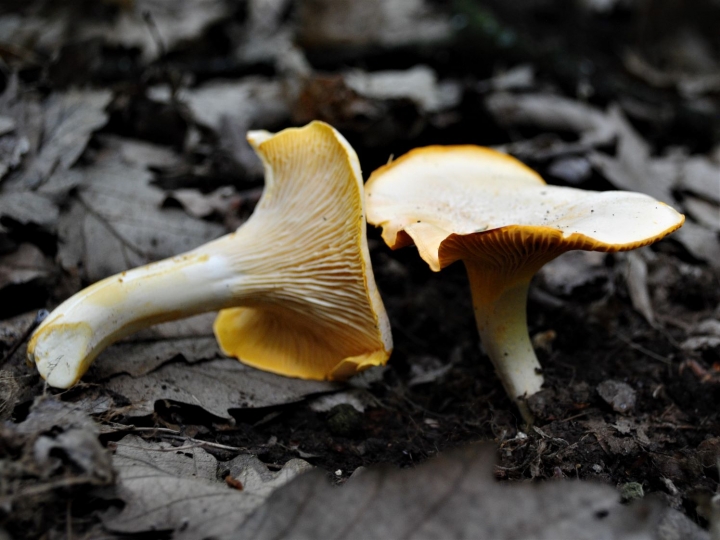














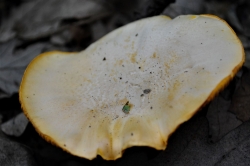
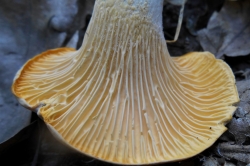
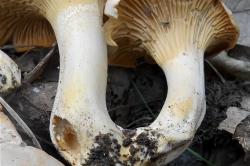
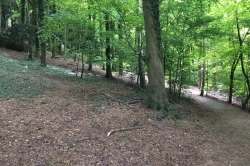
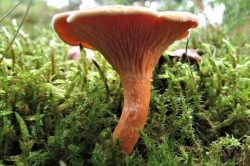





COMMENTS